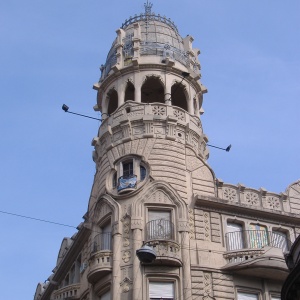Ostentation-concealment intertwining
Some considerations on urban landscaping shaping, 1900-1950
DOI:
https://doi.org/10.35305/23626097v4i7.57Keywords:
boast, manifestation, imageAbstract
Throughout the last century Rosario grew in a virulent way. It did so inserting building contributions on a labile base of urban widening which shaped a checkerboard extended in successive waves reaching the horizon. Within this frame, the initial nucleus of the town was enhanced setting up a new centre. It was held as a privileged space for social, economic, political and collective-representation activities. Private housing was developed around it. The survival of certain features makes it possible to appreciate the process. In a small area, a group of rent buildings which were pioneers in height shows their individual struggle for standing out within a cluster of urban institutional headquarters. Many complexes of low-rise housing were developed both inside the nucleus and in its "perimeter ring". Those in charge of this development –just as the rest of construction companies- aimed at making profits through housing construction but all of them did so giving raise to meaningful ventures. The main goal of this article is to show the roles played by rent buildings which were pioneers in height and complexes of low-rise housing in the ostentation- concealment intertwining that became one of the key identifying manifestations of the city.
Downloads
Metrics

Downloads
Published
How to Cite
Issue
Section
License
Open access policy
A&P Continuidad is a non-profit and open access publication. According to Mexico Declaration on Cultural Policies, the journal distribution is submitted to Creative Commons Attribution-Noncommercial-ShareAlike 4.0 International Public License (CC BY-NC-SA). “Neither the commercial use of the original work nor that of the possible derivative works are allowed. The distribution of derivative works should be submitted to the license regulating the original work. This license is not free.”
A&P Continuidad authorizes the partial or full reproduction of texts and graphs provided that the source is cited. Authors are exclusively responsible for the criteria expressed in the articles which do not necessarily reflect the opinion of the Editorial Committee or that of the Direction Board. The copyright of the published articles pertains to their authors or publishers.
Transfer of rights
The acceptance of an article to be published implies the author’s transfer of rights to the journal. Authors continue to have the right to use the material in future books or publications, approve or veto the republication of their works as well as the rights related to patents or other rights. Transfer of rights form may be downloaded here.























 This OJS site and its metadata are under a
This OJS site and its metadata are under a 

